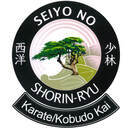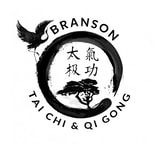|
Some of you know that a few months ago I did a 30 day challenge. (This isn't uncommon, I do a lot of 30 day challenges.) The challenge I did was to go without sugar for 30 days. By sugar I mean white, brown, high fructose corn syrup and artificial sweeteners. It was a challenge. But, I really felt good! Over the course of the month, I had more energy, lost weight and my skin looked better. But, my challenge was nothing compared to what this family did. Check it out... Visit this link to view their full story and transformation.
http://themindunleashed.org/2014/07/family-stopped-eating-sugar-year-happened.html If this inspires you, comment below. And, if you choose to do a 30, 90 or year-long challenge, please share your results!
1 Comment
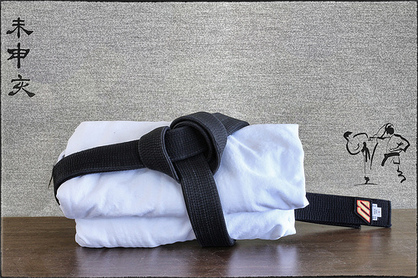 Photo Credit: Camera Eye Photography via Compfight cc Photo Credit: Camera Eye Photography via Compfight cc I was recently thinking back on my training as a martial artist. When I started as a white belt there were about 20 other students in my dojo's beginner class. Of the 20 students, only 4 of us from that original group made it to black belt. It wasn't that we were more talented than the others. Nor were we afforded more opportunity. We weren't necessarily the most athletic, physically fit or more youthful either. The ages of my black belt awards ceremony ranged from early 20s to age 50! But, we did have something that the others from our original class lacked... Perseverance and ritual. I think we all know what perseverance is. It's that gritty, never-give-up attitude. It's a commitment to stick it out no matter what challenges came your way. However, I believe that perseverance is enhanced by ritual. A ritual is a method of following a specific process on a regular basis. This process, if done frequently becomes a habit. A habit becomes a consistent way of life. This ritualistic process creates a mental connection that leads to success. Let me give you an example. Watch a professional basketball player when he goes up to the free-throw line during a game. The really good free throw shooters have a ritual they follow. They position their feet a certain way. They dribble the ball a certain number of times. They breathe a specific way. Then they position the ball in their hands just so and release the ball towards the basket the same way every time. All of this comes from consistent practice. If they follow their ritual, 90% of the time they will experience a successful shot. Karate is also built around ritual. We attend class at the same times each week. We wear our uniform (Gi) a certain way. We bow in a specific way as we enter and exit the dojo. We perform exercises the same way. We line up and perform kata in a particular way. We have our routines and processes. All of this is a ritual for success. Think of a big boulder near a stream. The consistent flow of water over the boulder smoothes the rough edges and makes the boulder round. Over more time, the water can even cut through the boulder creating a smooth passage. It is the same in karate, the more often we do these rituals the more we develop in our training. Over time, just like the boulder we become smooth. It is the same with anything in life that you wish to succeed in. In developing positive rituals we each can persevere and pave the way to our success. Here are some ideas on rituals you can incorporate into your life.
Rituals are powerful. They reinforce success in whatever goals you are working towards. Commit to making rituals part of your daily life and you will find you can accomplish more than you ever imagined! Remember: the only ones who don't succeed are those that quit. It's persistence and ritual that wins the battle every time. A lot of myths surround the martial art of traditional Okinawan karate. Here are eight that you may have heard and the real truth.
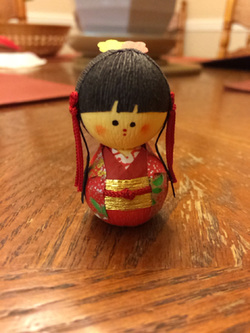 Recently, a gift of a tiny Geisha doll reminded me of something. She reminded me that when you fall down (or get knocked down) you get back up. And, you keep getting back up every time. It doesn't matter what challenges are thrown your way or what situation is occurring in your life at the time. You get back up. It doesn't matter if you are flat on your back at a low point in your life. You get back up. It doesn't matter if you are sick. You get back up. It doesn't matter if you weren't successful before or how many times you've tried and failed in the past. You get back up. It doesn't matter if you don't have anyone to lean on, pick you up, carry you or encourage you. You get back up. It doesn't matter if you've had your bell rung or your heart broken or your pride shattered. You get back up. You see, the world loves an underdog. The world wants to see you succeed. The world wants to see you get back up. Because it's the glorious grit of never quitting that emotionally charges the masses and inspires them. Then, when they fall down, and everyone does eventually... THEY GET BACK UP. ~ Vashon Borich, Sensei Like Branson Karate on Facebook Subscribe to this Blog! It's been a while since I last posted! It dawned on me that we have several new students that have recently joined our organization. One of the biggest initial challenges is learning how to tie your obi (belt). I decided to create a video demonstrating how to do it. There are several other ways to tie your belt. If in doubt, you should ask your Sensei at your home dojo how they prefer to have you tie your belt. Many Sensei's require a unique belt tying process in order to denote their martial arts school vs. another. For instance, in my dojo, it is important to me that everyone's knot on their belt points to their left hand side. In this way, we all are consistent within the dojo. For me, it is also a nod to the East... the birthplace of karate.
If you are interested in receiving regular email updates when new blog posts are added, be sure to Subscribe to the Branson Karate and Kobudo Blog! Also, I encourage all students of Seiyo No Shorin-Ryu Karate to register as a member on our National Web site at www.seiyonoshorinryu.org. In this way you can receive rank requirement checklists, instructional videos and other tools to help you in your karate training. I stumbled upon a video recently that deeply moved me. A martial artist demonstrates kata and self defense. However, this was no ordinary martial artist... this is someone who has profound physical challenges. But yet, in this video there is power, strength, beauty, creativity, respect and amazing technique. I found myself cheering him on as I watched him perform. In the self defense portion, when he took on two men, there was emotional joy at seeing him perform. The man's name is Said-Elmahmoudi from Morocco. Watch the video below (note the video is in another language, but you don't need to speak the language to understand what's going on.): If you have trouble viewing the video here is a direct link: http://www.youtube.com/watch?v=tkxteB67_Cs I am inspired by this man. He is proof that karate is for everyone, not just those who are privileged with perfect health. Never say, "I can't!" As there are people who may have told this martial artist he couldn't do something, but as you can see, he is proof that nothing is impossible. I hope you are as inspired as I was after watching him perform.
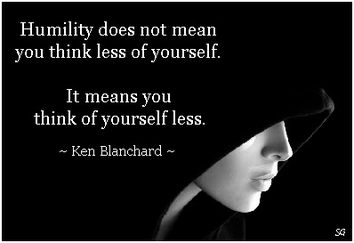 "There are many people out there who accomplish a little bit and decide that they are an expert. Humility is knowing what you don’t know." ~ Mark Manson (The Psychology of Life) In the martial arts world, I have noticed a trend with different practitioners and karate instructors. There appear to be two types of people, type A and B.
Type A, are the people who have a big mouth, who regularly talk about the things they have accomplished, they exaggerate their success and point out their trophies and belt ranks. Type A demands attention from those around them. They often dole out their sage wisdom to anyone and everyone who will listen. Then there is Type B, who downplay their successes or doesn't even mention them. Type B often admits when they don't know an answer, they aren't afraid to say when they make a mistake. They ask questions and learn from those in ranks below them and ahead of them. They regularly examine their own weaknesses and strive for constant improvement. They say very little, but demonstrate much through their actions. Although they may hold a very high rank in their primary martial art, they could be seen strapping on a white belt to learn a second, third or fourth martial art. The trend appears to be that the Type A's are only moderately successful in their martial arts. They may have had some accomplishments, but they had never achieved true master status or respect within the martial arts community. Where the Type B's are usually found to be legitimate masters in their art often with very high ranks. Not only were Type B's successful in their primary martial art, but in other arts as well. The Type B's had climbed to very peak of the martial arts community and achieved great respect from those around them. Taking on a type B attitude, pun intended as reference to the Beatitudes, is necessary for true success. This humility separates the wheat from the chaff. If you look through history and even the present, the greatest martial artists all have a humble spirit. Although many may not be widely known, they are at the top of their craft. They are male and female martial artists that have great knowledge, amazing levels of skill, true passion for their art and an ability to share their wisdom with others in ways that make their students passionate about the martial arts. Perhaps you don't have a deep desire to be a life-time martial artist. You can take these "Type B" traits and be a leader in any field, trade or industry. In summary, those traits are:
It's been a while since I last wrote. I've been involved in some introspective work and have been re-reading the Bubishi. If you are not familiar with the Bubishi, it is the classic manual of combat and was once considered a secret document passed down from master to student for centuries. The Bubishi is a classic Chinese work on philosophy, strategy, medicine and technique as they relate to the martial arts. It is sometimes referred to as the "bible of karate." There are several translations, the one I recommend is by Patrick McCarthy. One section that especially struck me was on the topic of balance. It goes on to state that "Perfect balance is a reflection of what is within." Balance can mean your physical capability to stand on one leg, for example. It can also mean the internal balance of your emotions and serene focus. In the Bubishi, physical and internal balance are one and the same. Balance is a requirement to be proficient in combat. If you have mastered balance, you are able to easily take advantage of or create a weakness in an opponent's posture. In the dojo we call this Kuzushi. Kuzushi is the Japanese term for unbalancing an opponent. It is the moment of weakness in which you can quickly overtake an opponent. The description that the Bubishi gives for the qualities contained in a balanced individual is poetic and beautiful... Like the sun's strength, your energy must radiate outward, your eyes should be as clear as the moon, and your legs should be like the rolling wheels of a cart. Your posture too, from head to toe, must be evenly balanced so that footwork and hand techniques support each other. If everything is in balance, no one will be able to defeat you. What I found most fascinating is that in order to have physical balance, you must first have internal balance. To cultivate internal balance one must grow in wisdom. The Bubishi lists nineteen laws of Wisdom. Here they are:
In today's digital age we are fortunate as we can share information quickly to anyone that has access to a device with an internet connection. I have a personal goal to make karate training more accessible and easier to learn for anyone. In pursuing this goal, I've helped organize a curriculum database Web site that contains promotional checklists, detailed technique description sheets and kata outlines for each rank up to 1st Kyu (brown belt with a black stripe.) In working with other members of the Seiyo No Shorin-Ryu organization we have also started adding multimedia files such as videos and photos to rank sections. We believe this will be a tremendous training resource for all our members.
To access this new database, you will be required to register as a Seiyo No Shorin Ryu Karate & Kobudo Kai member. If you already have an up-to-date annual Seiyo No Shorin-Ryu Karate membership, you will be credited the membership registration fee. Colored belts (kyus) are $25/yr. Black belts (dans) are $50/yr. As this site is brand new, it is currently in BETA status. This means, that it's a work in progress. We appreciate any helpful suggestions or tracking of any errors that you may find. Please click on the "contact" page to send that feedback. Let's get started! Visit this link to access the new Web site: http://snsr.wildapricot.org/ NOTE: This is the BETA site address provided by our Web site database hosting service. The official Web site address will be http://www.seiyonoshorinryu.org and will be activated by June 1, 2013. So, don't bookmark the "wildapricot" address. The site will constantly be growing and improving as we add more photos, videos, helpful documents and tools. It may sound like the lead in for an email in your Spam box, but you really can change your life in 30 days. The secret is selecting a single, meaningful change, goal or project that you commit to doing for 30 days in a row. I was inspired when I watched a TED talk by Matt Cutts. If you are not familiar with TED, it is a Web site that contains a full library of "riveting talks by remarkable people, free to the world." You can watch the video that inspired me here: If you can't see the embedded video, you can navigate to it with this link: http://www.ted.com/talks/matt_cutts_try_something_new_for_30_days.html Come to think of it, watching one TED video for 30 days could be a positive life changing endeavor. I challenge you for the next 30 days to do something amazing. If you are short on ideas here are just a few in various categories. (Thank you to my students who offered up a number of these!)
Martial Arts
I welcome your comments on this blog as to what you selected as your 30 day challenge, what happened along the way, if it was successful for you or how it changed an aspect of your life. |
AuthorVashon Borich-Leach, Sensei teaches traditional karate and tai chi in Branson, Missouri. She considers herself a life-time student of the arts. Her blog is an open journal of lessons learned in the martial arts. If you are a martial artist and would like to contribute to her blog please contact her. Archives
May 2023
Categories
All
©2012 Branson Karate & Kobudo™
|
©2010-2024 Vashon Enterprises LLC, DBA Branson Karate™

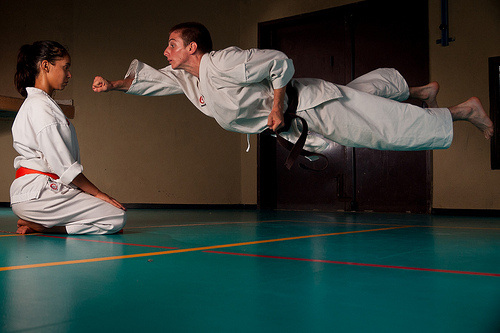
 RSS Feed
RSS Feed
